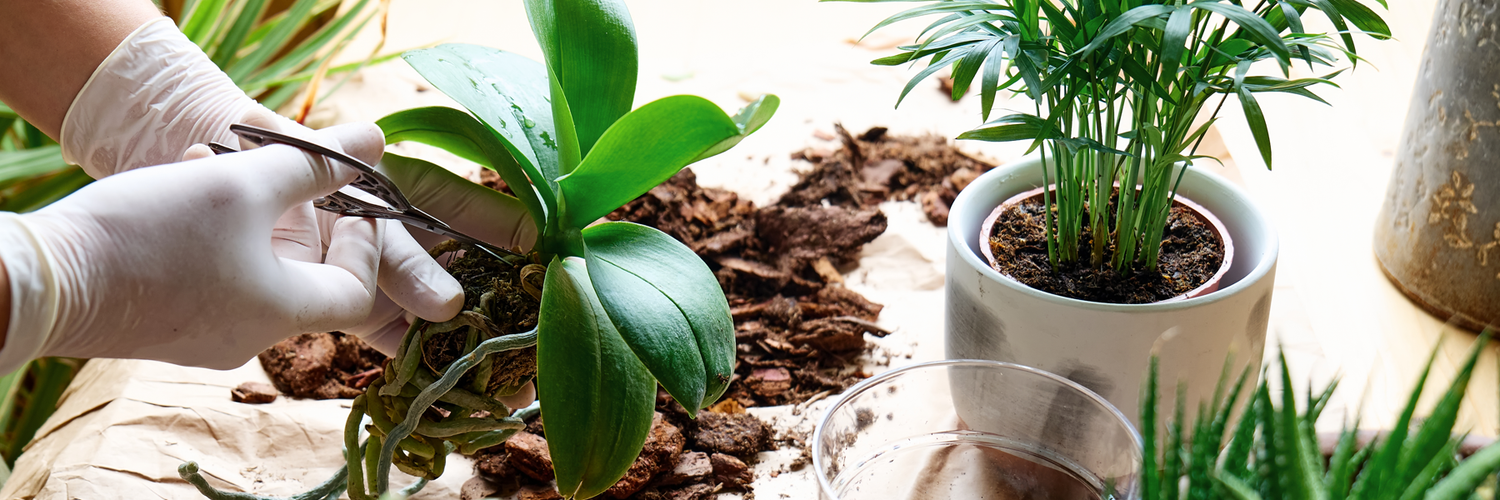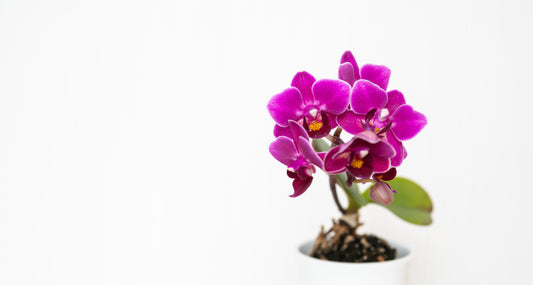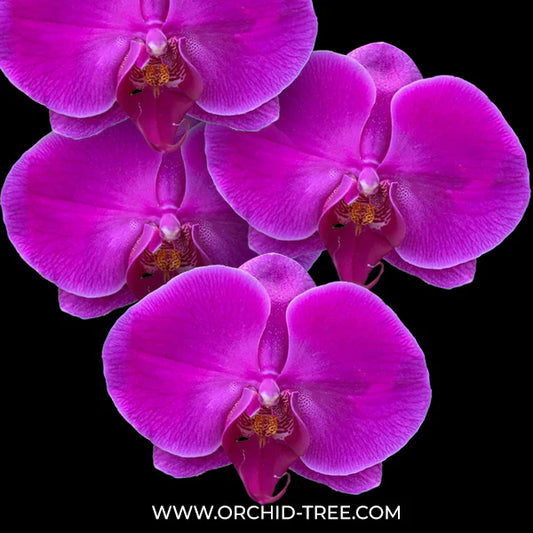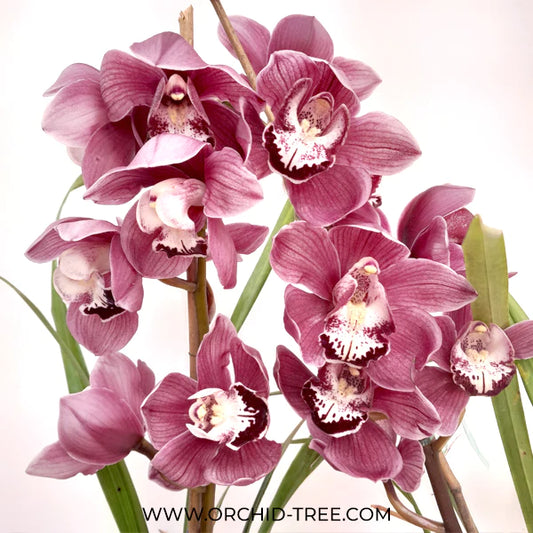Basics of Orchid Growing
Plant Specific Care Instructions
-
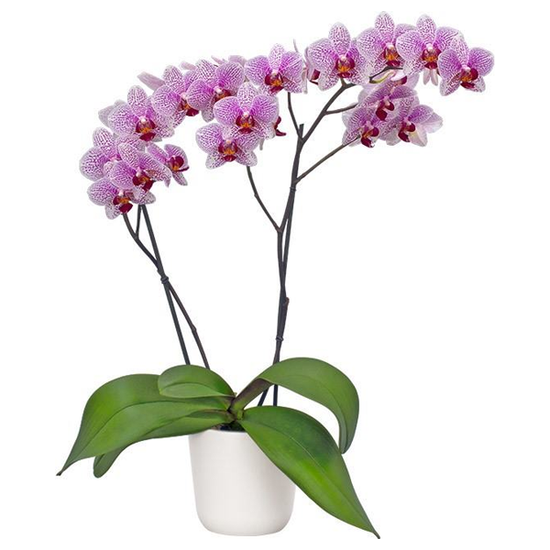
Phalaenopsis Orchids
View -
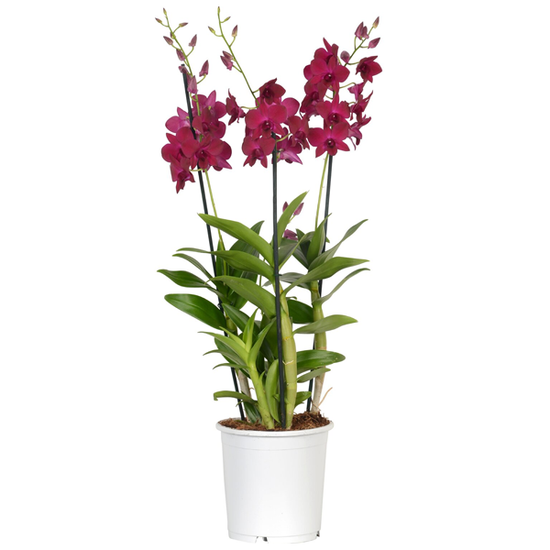
Dendrobium Orchids
View -
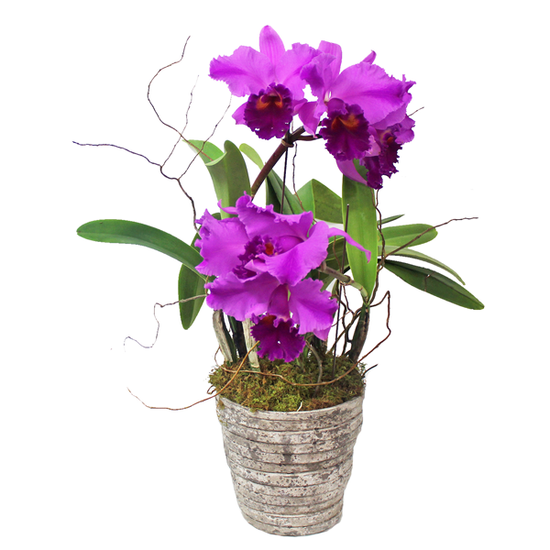
Cattleya Orchids
View -
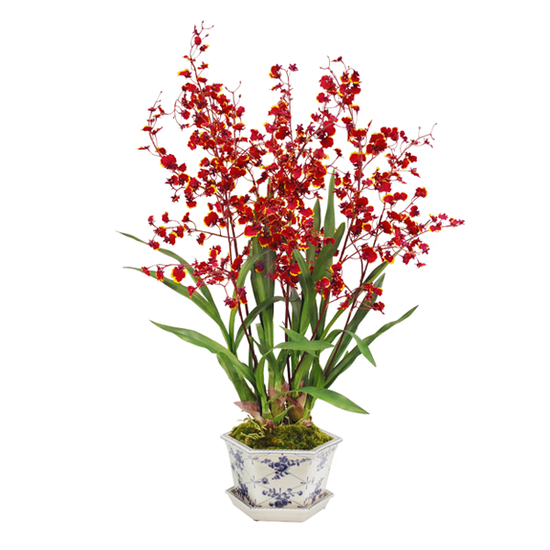
Oncidium Orchids
View -
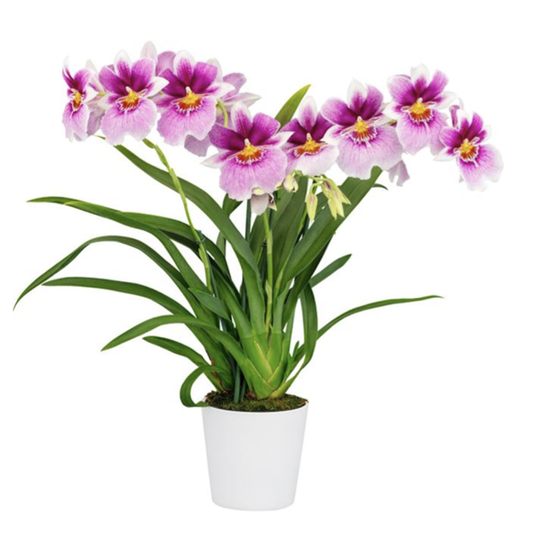
Miltoniopsis Orchids
View -
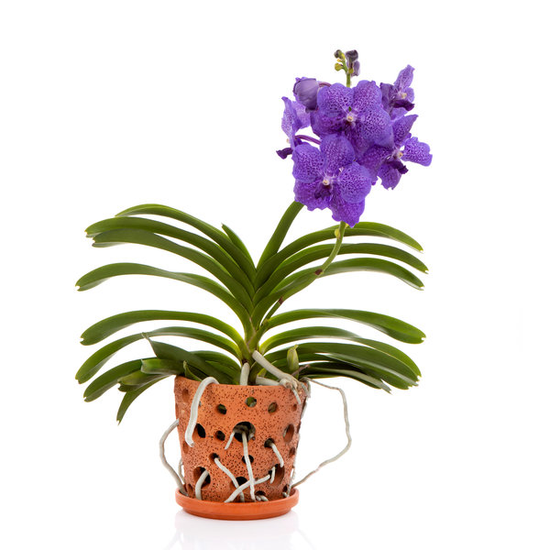
Vanda Orchids
View -
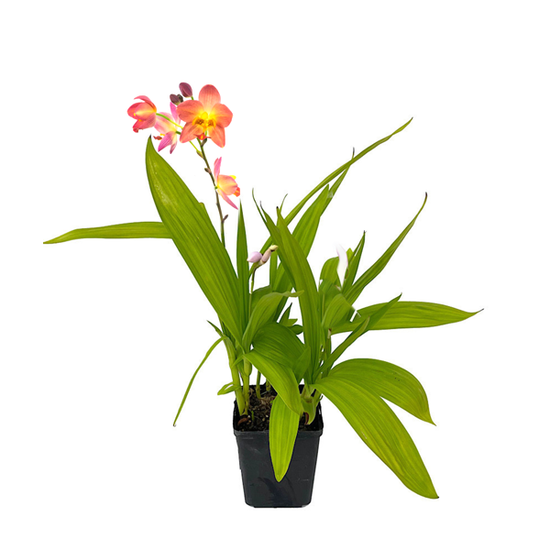
Ground Orchids
View -
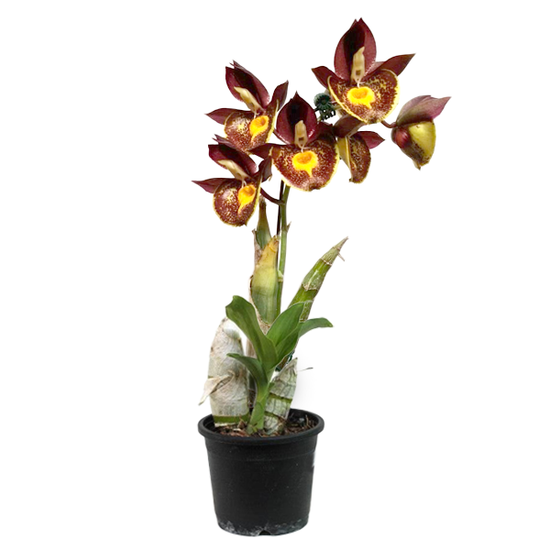
Catasetum Orchids
View -
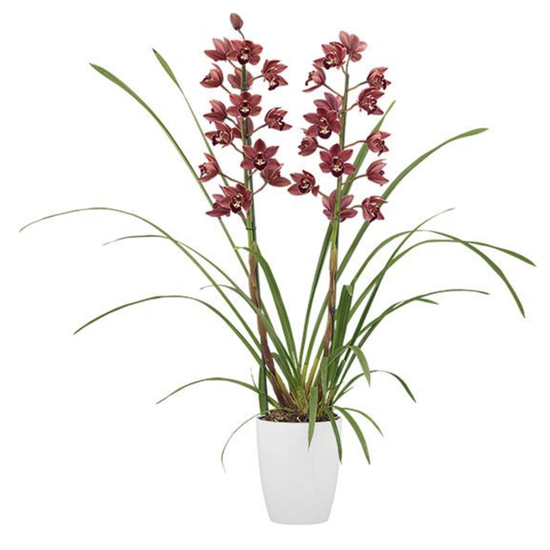
Cymbidium Orchids
View -
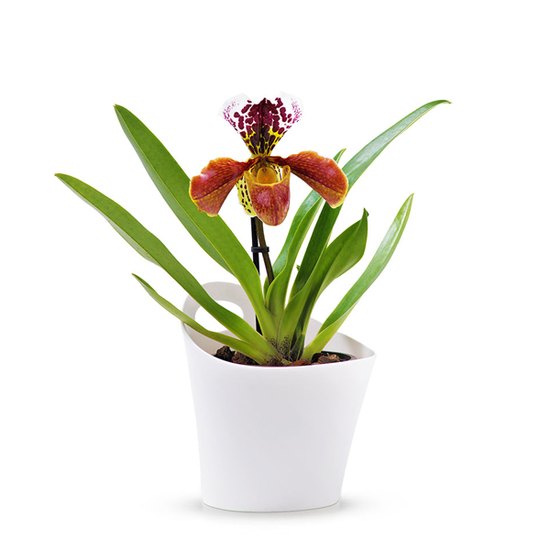
Paphiopedilum Orchids
View -
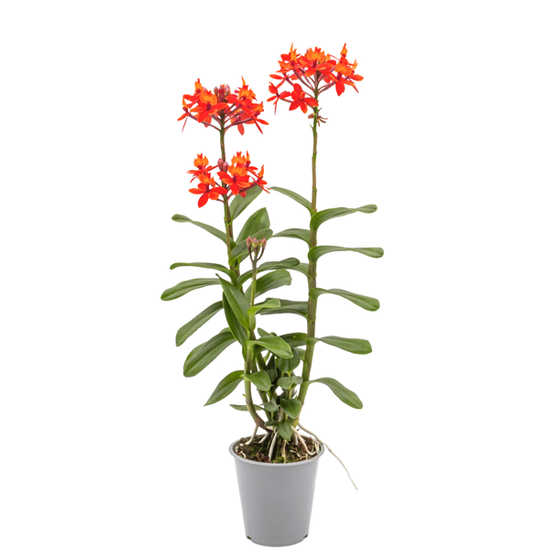
Epidendrum Orchids
View -
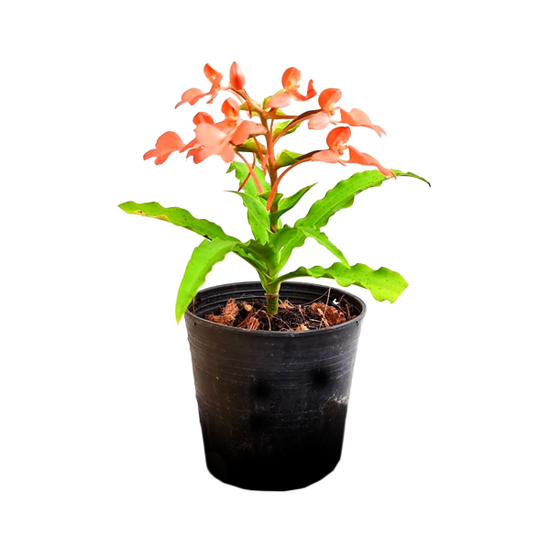
Habenaria Orchids
View -
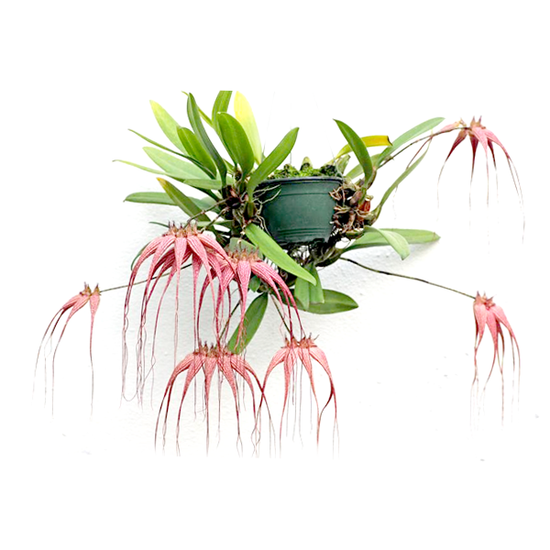
Bulbophyllum Orchids
View -
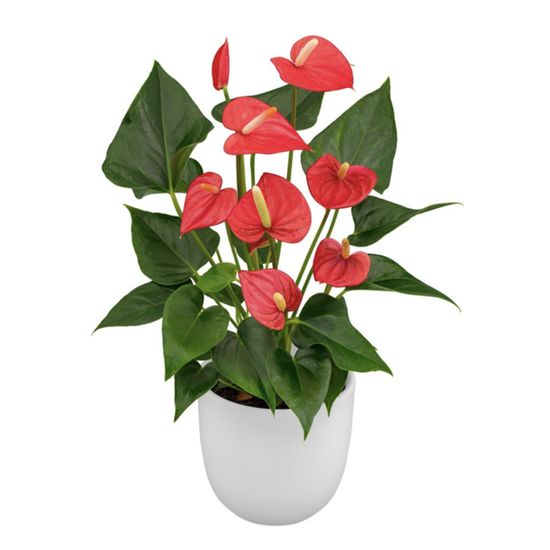
Anthurium Plants
View -
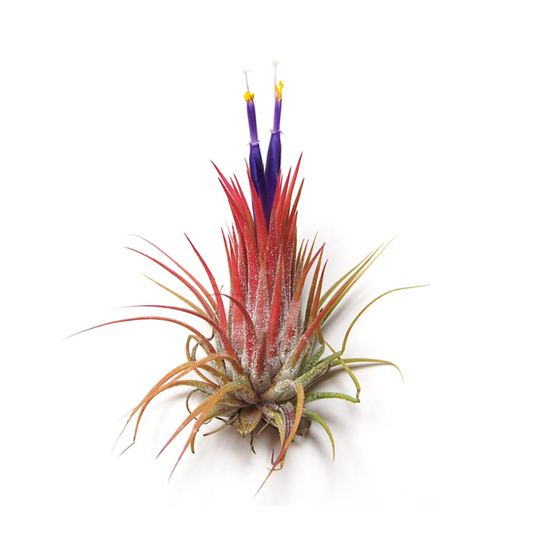
Air Plants
View -
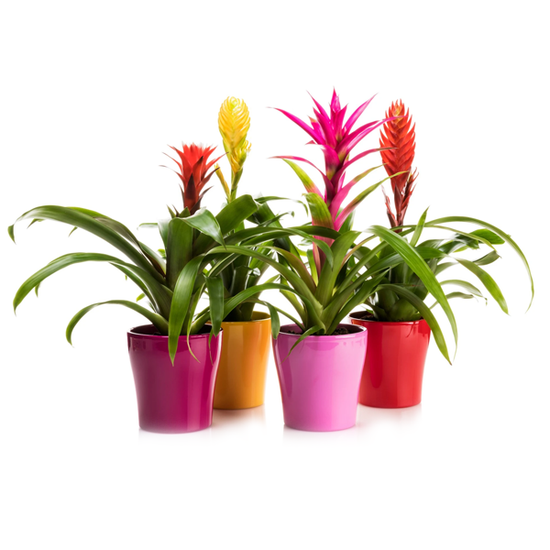
Bromeliad Plants
View
Frequently Asked questions
ORCHID FAQs
I've bought my first orchid. Now what?
If your orchid is already potted up, there is nothing much to do except watering and fertilizing when required.
If the orchid has come to you bare root, then you need to pot it up. Select a pot that has about 2-4 inches of free space around the base, depending on the size of the plant. For example, a Dendrobium or Cattleya will only need about 2 inches of free space while a Grammatophyllum will require about 4 inches of space due to the huge size of their pseudobulbs.
In effect, you are providing the plant just enough space to grow for a period of about 2 years, after which they will need to be re-potted.
Select media(potting material) according to the thickness of the roots; finer media for plants with finer roots, remove any old roots, position the plant at the center of the pot, secure it with a stake and fill the pot with the remaining media so that the plant stands firm in the pot.
Water thoroughly and keep aside. Do not water often until you see new roots appearing though you will need to increase the humidity around the plant.
I've visited a lot of orchid sites and each one has something to contradict what I've previously learned. How do I know if I'm reading the right thing?
You must remember that what works for you might not work for another person, for the simple reason that there are various parameters involved when it comes to growing orchids successfully.
Different orchids come from different regions of the world and have evolved to adjust to that particular climate. There are orchids that come from regions where it rains most of the year and there are others that will not bloom unless there is a remarkable dip in temperature.
Before buying your orchid, read well about their requirements and see if it will be possible for you to provide similar conditions. Talk to our Orchidists at Orchid Tree and gradually you'll learn how to grow your orchids to the best.
I've seen a lot of people growing their plants on benches. Is that really necessary?
If you only have a few plants, a clean, brightly lit balcony or verandah with ample air movement should suffice.
You can also keep your plants hanging after ensuring that they receive at least a few hours of sunlight.
Alternatively, you can keep your plants on a compound wall if you are sure it won't sour relationships with your neighbors or your pets won’t knock them off.
The main idea is to prevent soil-borne infections like Fusarium from entering your plant.
If you have a lot of plants, it would be worthwhile to invest in a bench that is about 90cm above ground level if your greenhouse is open to the elements. If you have a covered greenhouse the bench can be shorter.
I've been growing this orchid for several years now and it hasn't bloomed for me. Am I doing something wrong?
There are several factors that might be preventing your orchid from blooming. The foremost reason is light.
Most orchid generally needs about 5-6 hours of light at the least to bloom. Moving your plants to a brighter spot can solve the problem.
Another issue is temperature as some orchids require temperatures to drop considerably for them to bloom while some others require a day-night differential of about 5-10 degrees Celsius to bloom.
High Nitrogen fertilizer will also prevent your plant from blooming and this is proven by lush growth and healthy-looking plants that fail to bloom.
This can be set right by shifting to a high Potassium fertilizer with an added Magnesium supplement.
Another reason could be that you got yourself a seedling and it isn't mature enough to bloom.
I'm too lazy. Why can't I just get a big pot and allow my orchid to grow in it for years? Isn't that easier?
Epiphytic orchids in nature are found growing with their roots exposed to the various elements.
They are fertilized by bird droppings and washed by the rain. The old bark is stripped off and replaced with new bark and they are in a symbiotic relationship with various other living organisms in their environment.
In effect, they grow best in a dynamic environment compared to the static environment in a pot.
Beyond 2-3 years, this static environment in the pot can become intolerable to the plant due to the buildup of toxic fertilizer residue, extremes in pH, decaying roots as well as decaying soggy media. This can only be set right by repotting.
How often should I water my plants?
The foremost reason for orchids killed by a newbie is by overwatering. A newly potted orchid has most of its roots damaged and cannot take up much water.
Watering too often will kill it. Humidity around the plant needs to be increased while watering should be kept to a minimum. With established plants, there are several factors.
Plants in clay/terracotta pots, an increase in temperature or plants in a breezy environment need to be watered more often while watering needs to be decreased during the monsoons, in winter where it gets really cold as well as for plants grown in plastic pots.
Is it normal for orchid leaves to turn yellow and drop off?
There are different reasons that cause yellow leaves and not all of them are a cause to worry.
AGING
If the plant is healthy with an active root system, the bottom or older leaves one or two yellowing could be just a part normal aging process of the leaves.
LIGHT
Too much light is another reason for the yellowing of leaves.
Too much light will cause the chlorophyll in the leaves to deteriorate which in turn can turn your orchid yellowish to a light greenish colour and eventually cause premature loss of the leaves.
If the plant is receiving the appropriate amount of light for a certain period will be a robust light apple green colour.
DISEASE
When a lot of leaves are suddenly turning yellow and drop off or leaves are turning yellow from the plant's pseudobulbs or growing stems, you must check for any pests or for any symptoms of the disease.
Bacterial or fungal rots are often the cause, and these are very serious. A bactericide or fungicide treatment is required upon the identification of the disease.
In case any pests are found, identifying the pest and pesticide application is required. More often scales or mites are the culprits.
FERTILIZER BURN
Certain Orchids can be sensitive to an overdose of fertilizer and often evidenced by yellow leaves which eventually dries the leaves and drops.
There isn’t much to be done except flushing the potting medium and washing the leaves to remove excess fertilizer.
DEFICIENCY
Nutritional deficiency depending on the orchid you grow also could be a reason.
If that’s the case the plant will respond well to a spray of Magnesium sulfate or Epsom salt. Epsom salt or Magnesium sulfate will help the plant to build chlorophyll.
ROOTS
If the roots are not healthy, the plants will be unable to take up water and nutrients.
The roots can rot or dry due to overwatering or underwatering. You should check the root system to be sure it is healthy.
I have a lot of algae and moss growth on my orchid roots. How can this be controlled?
Algae and mosses grow in an acidic and moist environment. Orchids like to dry out between waterings while algae and mosses like to be constantly wet all the time.
Whenever you water your orchids remember to water them thoroughly once or twice a day as climatic conditions demand rather than several halfhearted mistings spaced out several times during the day.
If this doesn't solve your problem especially during the monsoons, then you can top dress with Dolomite or Calcium Carbonate(Oyster Shell). Remember that Oyster Shell generates a lot of heat and is not to be used during hot weather.
This raises the pH making it impossible for the algae and mosses to grow. Never use bleaching powder to kill algae as it can also be detrimental to your orchids.
My orchid is done blooming. Should I remove the spent spike or not?
Phalaenopsis are known to bloom off old spikes and so are Equitant Oncidiums.
For all other orchid genera, the spike can be removed once blooming is done with.
However, if you are worried about transmitting the virus through cutting a flower stalk, then you may allow the flower stalk to dry up before you make a cut

